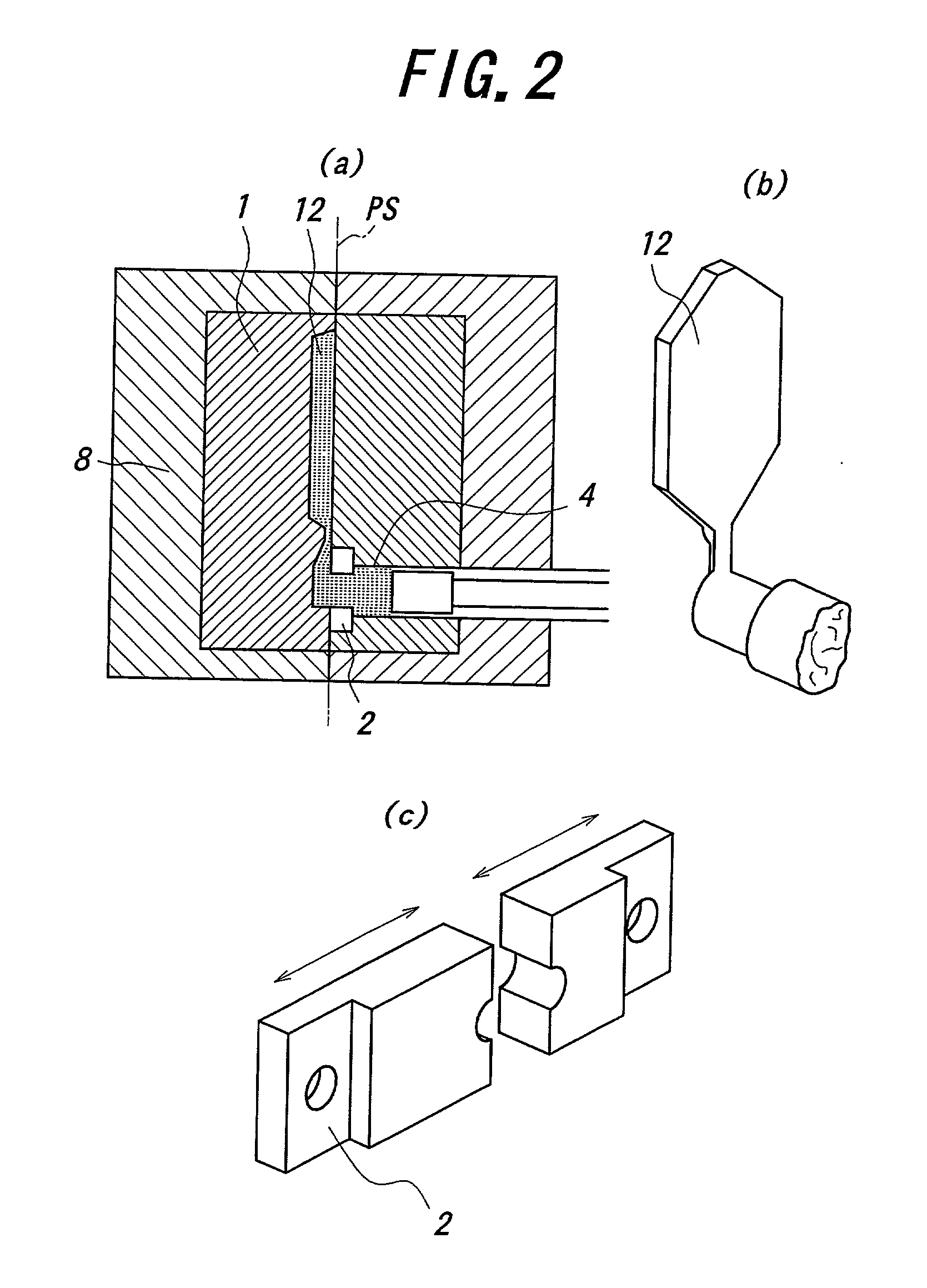Injection mold for semi-solidified Fe alloy
a technology of injection molds and alloys, which is applied in the direction of metal-working apparatus, metal-working molds, metallic material coating processes, etc., can solve the problems of premature crack formation in the mold, shorten the mold life, and poor thermal conductivity of iron or steel materials inclusive of skd61
- Summary
- Abstract
- Description
- Claims
- Application Information
AI Technical Summary
Benefits of technology
Problems solved by technology
Method used
Image
Examples
Embodiment Construction
Invention 118 Good None 0 None " .smallcircle. 466 16 .circleincircle. (A) Example 3 Invention 105 Slightly None 7 None " .smallcircle. 452 15 .smallcircle. Example damaged 4 Compar- 119 -- None 103 None " .smallcircle. 453 15 x ative Example 5 Compar- 35 Cermet layer None 0 None " .smallcircle. 465 14 x (B) ative separation Example 6 Compar- 80 Damaged Occurred 0 None 18 .smallcircle. 458 14 x (C) 80 shots ative Example 7 Compar- 88 " Occurred 23 Occurred 34 x 320 5 x (C) 88 shots ative Example 8 Compar- 63 " Occurred 2 None 15 .smallcircle. 453 14 x (C) 63 shots ative Example 9 Compar- 55 Largely Occurred 18 Occurred 54 x 292 5 x (C) 55 shots ative damaged Example Remarks: (A) Coating execution time is 1.3 times of No. 1. (B) Cerment layer separation at 35 shots. (C) Crack occurred: and stopped at noted shots.
[0070] As shown in Table 2, each of Sample Nos. 1 through 3 adopting the mold according to the present invention makes it possible to obtain cast iron product having excellen...
PUM
| Property | Measurement | Unit |
|---|---|---|
| thermal conductivity | aaaaa | aaaaa |
| surface roughness | aaaaa | aaaaa |
| thickness | aaaaa | aaaaa |
Abstract
Description
Claims
Application Information
 Login to View More
Login to View More - R&D
- Intellectual Property
- Life Sciences
- Materials
- Tech Scout
- Unparalleled Data Quality
- Higher Quality Content
- 60% Fewer Hallucinations
Browse by: Latest US Patents, China's latest patents, Technical Efficacy Thesaurus, Application Domain, Technology Topic, Popular Technical Reports.
© 2025 PatSnap. All rights reserved.Legal|Privacy policy|Modern Slavery Act Transparency Statement|Sitemap|About US| Contact US: help@patsnap.com



